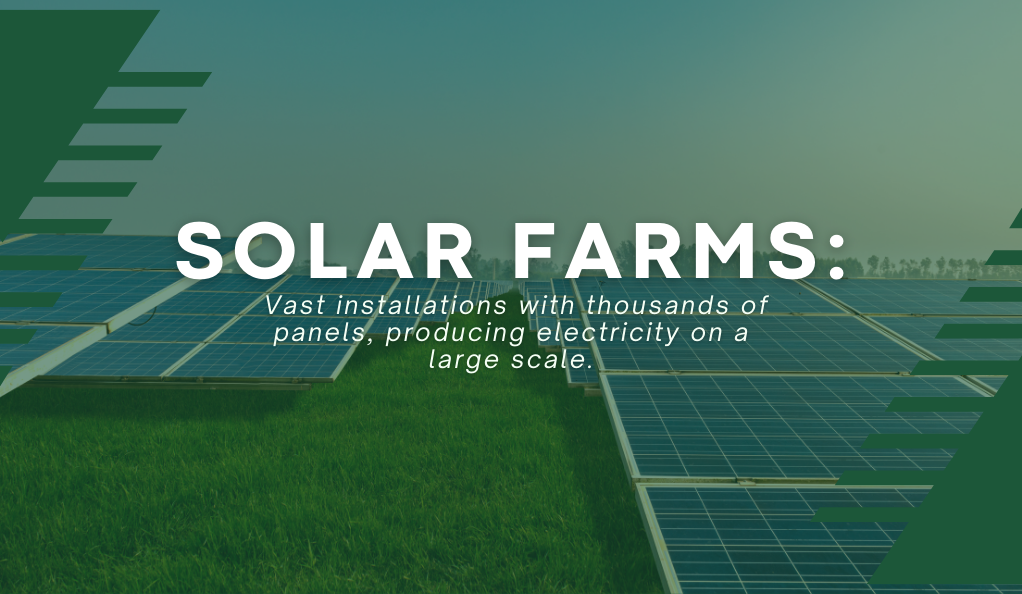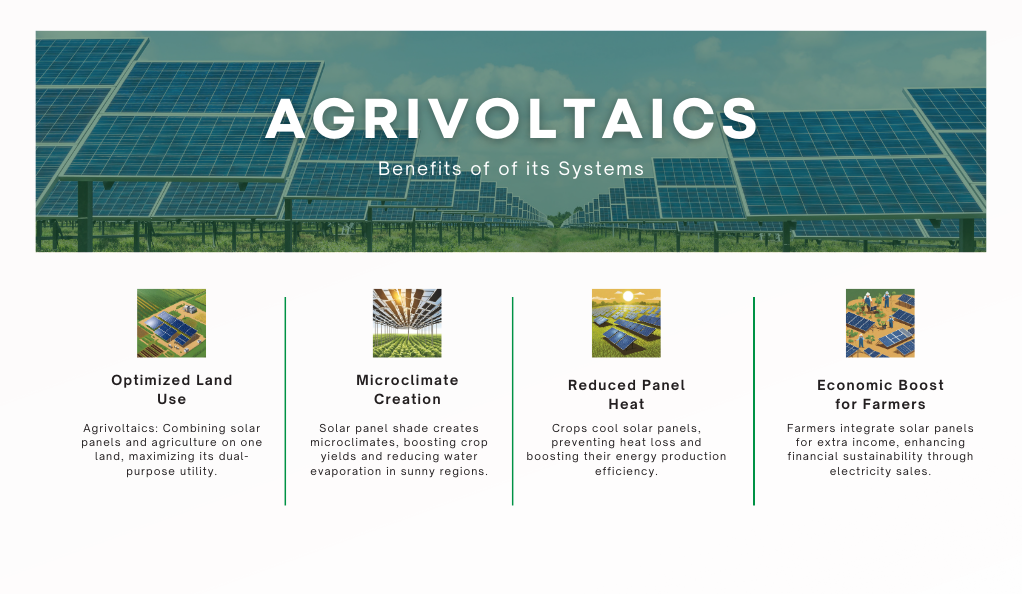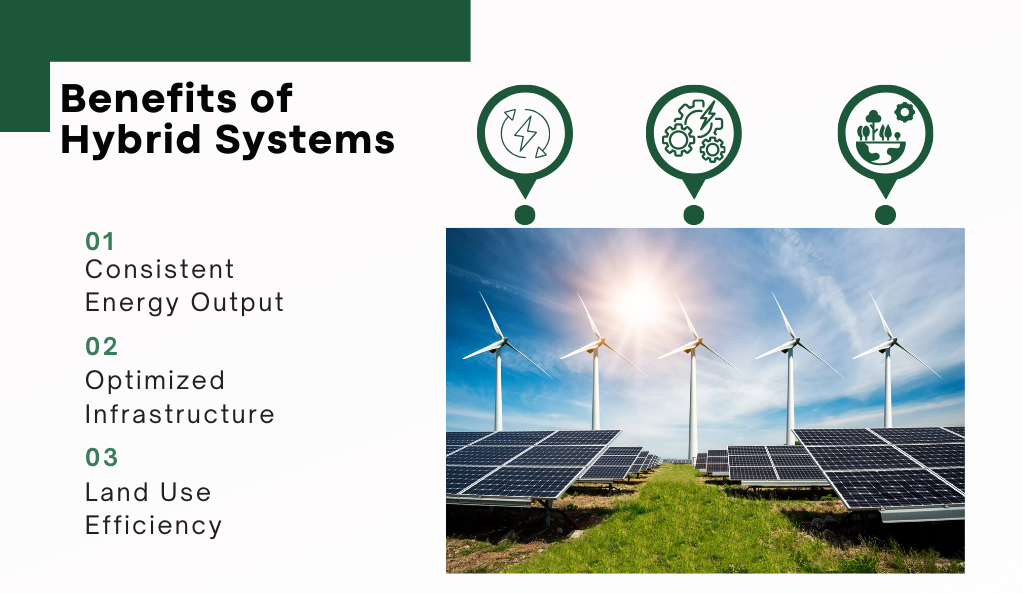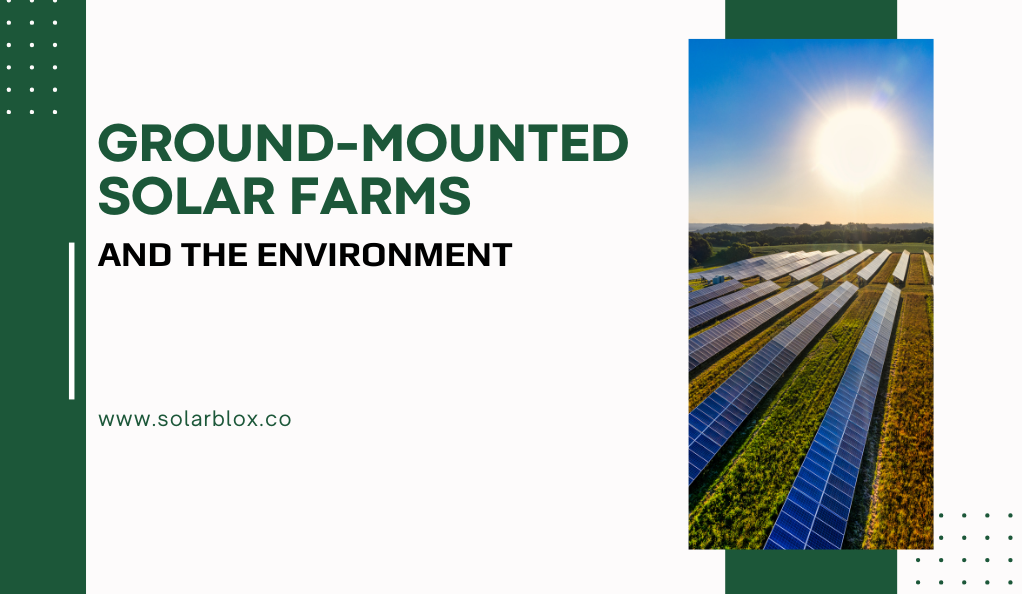The sun, a colossal ball of energy, has been the center of human fascination for millennia. Its power, which has been revered and worshiped, is now being harnessed more than ever before to address the world’s growing energy needs. As concerns about climate change and depleting fossil fuels rise, solar energy has emerged as a beacon of hope. While many of us are familiar with the sight of solar panels on rooftops, there’s a larger, more expansive realm of solar energy that’s rapidly gaining traction: ground-mounted solar farms.
The Evolution of Solar Energy
Solar energy’s journey began with rudimentary uses, like using sunlight to ignite fires with magnifying glasses. Over time, technological advancements led to the development of solar cells in the mid-20th century. These cells, initially used for space missions, found their way to Earth, adorning rooftops and providing households with a renewable source of power.
However, as the demand for electricity grew and the urgency to switch to sustainable energy sources became evident, the limitations of rooftop solar installations became apparent. The space constraint on rooftops, coupled with the varying architectural designs of buildings, meant that there was a cap on how much energy could be generated.
The Shift to Large-Scale Solar Farms
Enter ground-mounted solar farms, vast expanses of land dedicated solely to capturing sunlight and converting it into electricity. Unlike the scattered and individualistic nature of rooftop installations, solar farms are a collective endeavor. They represent a centralized system where large tracts of land, often spanning multiple acres, are equipped with solar panels.
These farms are not just an alternative to rooftop installations but are a testament to human ambition. They signify our capability to produce power on an industrial scale using renewable sources. The sheer scale of these installations allows for the generation of electricity that can power entire towns and contribute significantly to the national grid.
| Comparison | Rooftop Solar | Ground-Mounted Solar Farms |
|---|---|---|
| Scale | Limited to the size of the rooftop | Can span multiple acres |
| Installation | Depends on building architecture | Uniform and optimized for maximum efficiency |
| Maintenance | Can be challenging due to height and building design | Easier due to accessibility |
| Energy Production | Suitable for individual households or small businesses | Capable of powering towns and contributing to the grid |
What is a Ground-Mounted Solar Farms?

Solar farms, often referred to as solar parks or photovoltaic power stations, are large-scale solar installations designed to produce electricity in significant quantities. Unlike the individual solar panels one might see on a residential rooftop, these farms consist of thousands, sometimes even millions, of solar panels spread across vast areas of land.
Definition and Basic Structure
At its core, a ground-mounted solar farm is a collection of solar panels mounted on frames, which are anchored to the ground. These panels are interconnected, and their collective energy output is channeled to a central point, typically an inverter, which then converts the direct current (DC) produced by the panels into alternating current (AC) suitable for the grid.
Differences between Rooftop Solar and Utility-Scale Solar Farms
While both rooftop solar and solar farms aim to harness the sun’s energy, their scale and purpose differ significantly:
- Scale: Rooftop installations are typically smaller, catering to the energy needs of a single household or building. In contrast, solar farms can span hundreds of acres, producing enough electricity to power entire communities.
- Installation: Rooftop solar panels are constrained by the size and structure of the building. Solar farms, on the other hand, are designed from the ground up (literally) to maximize energy production, with panels often positioned at optimal angles and orientations to capture the most sunlight.
- Maintenance: Maintaining a solar farm is generally more straightforward than rooftop installations. With easy ground access, technicians can quickly address any issues, ensuring that the farm operates at peak efficiency.
- Energy Production: Due to their sheer size, solar farms can produce a much higher amount of electricity compared to rooftop installations. This large-scale production makes them a vital component in national energy strategies aiming for increased renewable energy contributions.
Solar farms represent a monumental step in our quest for clean energy. By dedicating vast tracts of land to the sole purpose of energy generation, we underline our commitment to a sustainable future, free from the shackles of fossil fuels. As technology advances and our understanding of solar energy deepens, these farms will undoubtedly play an even more significant role in shaping our energy landscape.
Advantages and Disadvantages of Solar Farms
Harnessing the sun’s energy on a large scale comes with its own set of benefits and challenges. As with any technology, it’s essential to weigh the pros and cons to make informed decisions.
Benefits of Large-Scale Solar Generation Technology
- Economies of Scale: Building solar infrastructure on a large scale often results in cost savings per unit of electricity generated. This means that the more extensive the solar farm, the cheaper it can be to produce electricity.
- Consistent Energy Production: Due to their size and the number of panels, solar farms can produce a consistent amount of energy, even if some panels are underperforming or in the shade.
- Flexibility in Location: Solar farms can be built in areas where land is less expensive and more abundant, such as deserts or unused agricultural land.
- Reduced Carbon Footprint: Solar farms contribute significantly to reducing greenhouse gas emissions. By generating electricity without burning fossil fuels, they play a crucial role in combating climate change.
- Job Creation: Building and maintaining solar farms create jobs in engineering, construction, and ongoing maintenance.
Challenges and Criticisms Faced by Solar Farms
- Land Use Concerns: Large solar farms require vast areas of land, which can lead to habitat disruption for local wildlife and concerns about land use priorities.
- Initial Capital Costs: While the cost of solar panels has decreased over the years, setting up a large-scale solar farm still requires a significant initial investment.
- Intermittency Issues: Solar farms produce electricity only when the sun is shining. This intermittency requires backup power sources or energy storage solutions to ensure a consistent power supply.
- Aesthetic Concerns: Some people feel that large expanses of solar panels can be an eyesore, especially in naturally beautiful areas.
- End-of-Life Disposal: Solar panels have a lifespan of about 25-30 years. Disposing of or recycling them at the end of their life cycle is a challenge that the industry is still addressing.
Environmental Impact and Land Use
One of the primary concerns surrounding solar farms is their impact on the environment, particularly regarding land use. While they offer a green alternative to fossil fuels, their footprint is undeniable.
- Land Area Requirements: A typical solar farm can require between 3 to 10 acres of land per megawatt of generating capacity. This means a 100 MW solar farm might need anywhere from 300 to 1,000 acres.
- Optimal Locations: Deserts and other areas with high solar irradiance are ideal for solar farms. However, these areas can also be ecologically sensitive, raising concerns about habitat disruption.
- Effects on Local Ecosystems: Solar farms can alter local temperatures, potentially affecting local flora and fauna. However, with proper planning, these effects can be minimized.
- Coexistence with Agriculture: There’s growing interest in combining solar farming with agriculture, a concept known as agrivoltaics. This dual-use approach can mitigate land use concerns by allowing farming activities to continue alongside energy generation.
In the grand scheme of things, while solar farms do have an environmental footprint, their impact is significantly less harmful than traditional fossil fuel-based power generation methods. With careful planning and innovative approaches, we can harness the sun’s energy while preserving the planet’s delicate ecosystems.
Agrivoltaics: Combining Agriculture and Solar Energy
The fusion of agriculture and photovoltaics, known as agrivoltaics, is an innovative approach that seeks to address the land use concerns associated with large-scale solar installations. By integrating solar panels with agricultural activities, it’s possible to harness the sun’s energy without sacrificing valuable farmland.
Agrivoltaics involves installing solar panels at a height that allows crops to be grown underneath. This dual-use system ensures that the land serves two purposes simultaneously: food production and energy generation.

Benefits of Agrivoltaic Systems
- Optimized Land Use: Instead of dedicating vast tracts of land solely to solar panels or agriculture, agrivoltaics ensures that the same piece of land serves dual purposes, maximizing its utility.
- Microclimate Creation: The shade provided by the solar panels can create a microclimate that benefits certain crops, especially in regions with intense sunlight. This can lead to increased crop yields and reduced water evaporation.
- Reduced Panel Heat: Crops underneath the panels can have a cooling effect, which can enhance the efficiency of solar panels. Solar panels tend to lose efficiency as they heat up, so this cooling effect can be beneficial for energy production.
- Economic Boost for Farmers: By integrating solar panels into their farms, farmers can have an additional source of income from selling the generated electricity, making their operations more financially sustainable.
Challenges of Agrivoltaic Systems
- Initial Setup Costs: Integrating solar infrastructure with agriculture can be more expensive initially due to the specialized mounting systems required.
- Maintenance Concerns: The combination of farming activities and solar infrastructure can complicate maintenance tasks, especially if heavy machinery is involved.
- Crop Selection: Not all crops are suitable for agrivoltaic systems. Research is ongoing to determine which crops thrive best in such environments.
Co-location and Hybrid Renewable Energy Systems
Beyond agrivoltaics, there’s a growing interest in co-locating solar farms with other renewable energy sources, creating hybrid systems that maximize energy output and consistency.
Combining Solar with Wind
In areas where both solar and wind resources are abundant, combining solar farms with wind turbines can provide a more consistent energy output. When the sun isn’t shining, the wind might be blowing, and vice versa.

Benefits of Hybrid Systems
- Consistent Energy Output: By harnessing multiple renewable sources, hybrid systems can mitigate the intermittency issues associated with individual energy sources.
- Optimized Infrastructure: Shared infrastructure, such as inverters, substations, and transmission lines, can lead to cost savings.
- Land Use Efficiency: Co-locating multiple renewable sources on the same piece of land can maximize its utility and energy output.
Challenges of Hybrid Systems
- Integration Complexity: Managing and integrating multiple energy sources requires sophisticated control systems and expertise.
- Resource Assessment: Determining the optimal mix of renewable sources for a specific location requires detailed resource assessments.
As the world moves towards a more sustainable energy future, innovative approaches like agrivoltaics and hybrid renewable systems will play a crucial role in ensuring that we harness the planet’s resources efficiently and responsibly.
Technological Advancements in Solar Farms
The solar industry has witnessed rapid technological advancements over the past few decades. These innovations have not only improved the efficiency of solar panels but have also introduced new mechanisms to optimize energy capture and conversion.
Ground-Mounted PV Systems and Tracking Mechanisms
One of the significant advancements in solar farm technology is the introduction of tracking systems. Unlike static panels, trackers allow solar panels to move and follow the sun’s path throughout the day.
- Single-Axis Trackers: These trackers move panels from east to west, following the sun’s daily path. They can increase energy production by up to 25% compared to fixed-tilt systems.
- Dual-Axis Trackers: These systems offer movement in two directions, both horizontally and vertically, allowing the panels to remain perpendicular to the sun’s rays throughout the day. They can boost energy production by up to 40%.
Power Conversion and System Performance
The efficiency of solar farms is not just about capturing sunlight but also converting it into usable electricity.
- Advanced Inverters: Modern inverters are more efficient and come with features that allow for better grid integration, voltage regulation, and even energy storage.
- Bifacial Solar Panels: These panels capture sunlight from both their front and back sides, utilizing the light reflected off the ground. This can increase energy production by up to 20%.
- Enhanced Monitoring and Maintenance: With the integration of IoT (Internet of Things) and AI (Artificial Intelligence), solar farms can now be monitored in real-time. Predictive maintenance, powered by AI, can forecast potential issues, ensuring timely interventions and minimal downtime.
The Economics of Solar Farms
The financial viability of solar farms has improved dramatically over the years, thanks to decreasing costs and supportive policies.
Journey to Grid Parity
Grid parity refers to the point when the cost of solar-generated electricity is equal to or less than the price of power from the electricity grid. Many regions globally have achieved grid parity, making solar not just an environmentally sound choice but also an economically viable one.
Financial Incentives and Support Mechanisms
Governments worldwide have recognized the importance of renewable energy and have introduced various incentives to promote solar farm installations.
- Tax Credits: Many countries offer tax benefits or credits to entities investing in solar energy infrastructure.
- Feed-in Tariffs: This mechanism guarantees solar energy producers a fixed price for the electricity they feed into the grid, ensuring a return on investment.
- Power Purchase Agreements (PPAs): These are long-term contracts where a buyer agrees to purchase solar-generated electricity at a predetermined price, providing financial stability to solar farm operators.
The combination of technological advancements and favorable economics has positioned solar farms at the forefront of the renewable energy revolution. As we continue to innovate and refine these technologies, solar farms will play an even more pivotal role in shaping a sustainable energy future.
Conclusion
The transition to renewable energy is not just a choice; it’s an imperative. As the world grapples with the challenges of climate change, dwindling fossil fuel reserves, and the urgent need for sustainable solutions, solar energy, particularly ground-mounted solar farms, emerges as a beacon of hope.
From their inception as vast fields of gleaming panels to their evolution into integrated systems coexisting with agriculture and other renewables, solar farms have come a long way. Their scale, combined with technological advancements, positions them as formidable powerhouses capable of meeting significant portions of our energy demands.
While challenges exist, from land use concerns to the need for efficient energy storage solutions, the trajectory of solar farms is undeniably upward. The decreasing costs, combined with increasing efficiency and supportive global policies, ensure that solar farms are not just a temporary solution but a long-term strategy.
Beyond the technical and economic aspects, solar farms represent a broader shift in our collective mindset. They stand as testament to humanity’s ability to innovate, adapt, and work towards a future where energy is clean, abundant, and harmonious with nature.
As we stand at this pivotal juncture, it’s essential to champion and support the growth of solar farms. Their potential goes beyond kilowatts and grid contributions; they hold the promise of a brighter, cleaner, and more sustainable world for generations to come.

